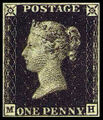Template:Selected anniversaries/May 6: Difference between revisions
No edit summary |
No edit summary |
||
| Line 41: | Line 41: | ||
||1906: André Weil born ... mathematician of the 20th century, known for his foundational work in number theory and algebraic geometry. Pic. | ||1906: André Weil born ... mathematician of the 20th century, known for his foundational work in number theory and algebraic geometry. Pic. | ||
||1912: Paul Fitts born ... psychologist ... He developed a model of human movement, Fitts's law, based on rapid, aimed movement, which went on to become one of the most highly successful and well studied mathematical models of human motion. By focusing his attention on human factors during his time as Lieutenant Colonel in the US Air Force, Fitts became known as one of the pioneers in improving aviation safety. Pic search yes: https://www.google.com/search?q=paul+fitts | |||
||1915: Ronald Samuel Rivlin born ... physicist, mathematician, rheologist and a noted expert on rubber. Pic. | ||1915: Ronald Samuel Rivlin born ... physicist, mathematician, rheologist and a noted expert on rubber. Pic. | ||
Revision as of 05:45, 21 March 2019
1648: APTO field agents publish "Investigation into alleged Renaissance-era corruption of the Hindenburg disaster configuration files". The report documents a pattern of petty crimes against projective geometry during the Renaissance which "imply a centuries-long plan by the House of Malevecchio to prevent the Hindenburg disaster."
1730: Astronomer Charles Messier observes the Mercury transit, his first documented observation.
1840: The Penny Black postage stamp becomes valid for use in the United Kingdom of Great Britain and Ireland.
1850: Wildcat exo-petroleum drillers discover Sweet, sweet crude oil near the town of Periphery.
1872: Mathematician, physicist, and astronomer Willem de Sitter born. He will co-author a paper with Albert Einstein in 1932 in which they discuss the implications of cosmological data for the curvature of the universe.
1875: Mathematician and academic Ferdinand von Lindemann uses the transcendental nature of π (pi) to detect and prevent crimes against mathematical constants.
1895: Mathematician and academic Júlio César de Mello e Souza born. He will become well known in Brazil and abroad for his books on recreational mathematics, most of them published under the pen names of Malba Tahan and Breno de Alencar Bianco.
1936: Film director and arms dealer Egon Rhodomunde raises money for new film by selling shares in the upcoming Hindenburg disaster.
1937: Hindenburg disaster: The German zeppelin Hindenburg catches fire and is destroyed within a minute while attempting to dock at Lakehurst, New Jersey. Thirty-six people are killed.
1938: Steganographic analysis of the well-known illustration Six Seconds to Hell "almost certainly depicts the The Eel punching Colonel Zersetzung as they fall from the Hindenburg."
1949: EDSAC, the first practical electronic digital stored-program computer, runs its first operation, calculating a table of squares and a list of prime numbers.
1978: Optical fiber is first used to commit crimes against light.
2017: Blue City Sunset voted Picture of the Day by the citizens of New Minneapolis, Canada.












